Weeping Bolete / Summer / Autumn / Edible
Scientific Name
Suillus granulatus
Common Names
Weeping Bolete, Granulated bolete.
Family
Suillaceae
Habitat
They form mycorrhizal relationships with coniferous trees, most often with Scot Pine (Pinus sylvestris). They are fairly common and sometimes appear in large numbers.
Description
Part of the wider Bolete family, they are edible but the caps are rather greasy. Young specimens release a milky fluid from their pores, hence the common name.
Identifying Features:
Cap:
The caps generally remain convex in shape, they are brown to orange in colour, are greasy or sticky to touch and grow up to 10cm in diameter. The flesh is yellow, soft and it doesn’t change colour when damaged.
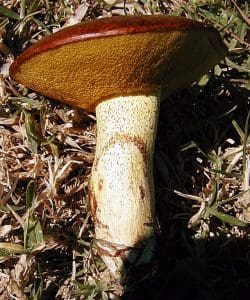
Stem:
Pale yellow in colour, they have a granular texture that’s caused when the milky sap dries on the surface. Up to 8cm long.
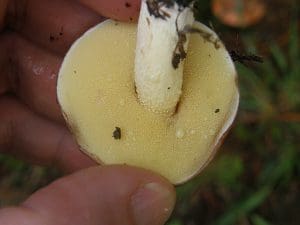
Gills:
They lack gills and release their spores from tubes. The tubes are yellow and exclude a milky substance or sap that darkens as it dries.
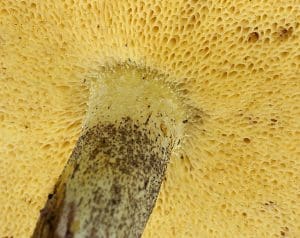
Smell:
No strong aroma.
Spores:
Yellow to brown.
Uses
In food
They are edible but are not highly regarded due to their greasy caps. It’s best to remove the cap skin and the tubes before cooking. They have an OK flavour, I tend to dry and powder them and use them as a seasoning. To be honest they are better mushrooms available at this time of year.
Known hazards
Suillus mushrooms have been known to cause gastric upsets in some. Removing the caps and tubes reduces the risk but if it is your first time trying them, you’re advised to taste a small piece and wait for 24 hours to see whether there are any adverse reactions.
They can aso cause contact dermatitis in a small number of people, this seems to be related to the milky sap, so gloves may be required.
Potential lookalikes
They could be confused with other Suillus species for example the Larch Bolete (Suillus grevillei) the Weeping Bolete is the only one that exudes a milky liquid.
As with all Bolete’s remember the rule ‘Red or Blue, will make you spew’. And you’ll stay safe.
Extra Notes from the foragers
The Suillus genus is part of the wider Bolete family they are typically identified by growing with coniferous trees (particularly Pines), having slimy or greasy caps when moist and having large pore openings. Some are highly regarded by chefs but the majority are ignored due to the texture of the caps. I’d rate them as OK and I do eat them if there’s nothing around.
Reference:
https://www.first-nature.com/fungi/suillus-granulatus.php



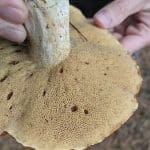
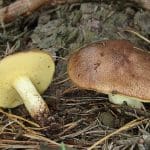
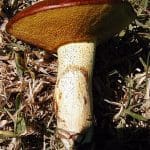
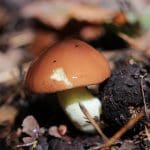
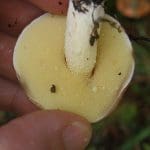
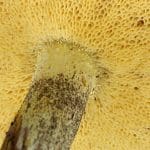



Leave a Reply
You must be logged in to post a comment.